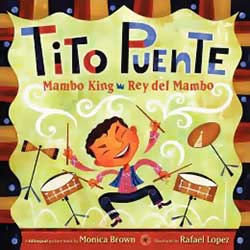One of my favorite parts of teaching my online class Bilingual Storytime at Your Biblioteca, is that I learn so much from my students. This week a student shared a super cute and simple little rhyme, "Los Gatitos" (shared below), and it inspired me to post an outline for a cat-themed bilingual storytime this week. Enjoy!
Books / Libros
Ven, gatita, ven / Here, Kitty, Kitty is a cute bilingual story from the My Family / Mi Familia series by Pat Mora. Join in the fun as the family searches everywhere to find the hiding kitty! A good read for toddlers.
La primera luna llena de Gatita, the Spanish translation of Keven Henkes' Caldecott-winning Kitten's First Full Moon, is a contemporary classic and an absolutely precious story of a little kitten's attempt to get closer to the great saucer of milk in the sky. Provides lots of opportunities to engage children in the story by predicting what might happen next. Excellent for preschool.
Un gato y un perro / A Cat and a Dog by Claire Masurel is another bilingual book, and one of my favorites to share with the preschool crowd. Dog and Cat naturally do not get along. However, they come to realize that they each have something special to offer the other and find themselves becoming buddies.
I have successfully used and would recommend all of these titles with mixed-age audiences.
Storytelling with Flannelboard / Un cuento para contar
Cookie's Week by Cindy Ward is a story many librarians are familiar with about a mischievous cat who finds creative ways to wreak havoc all week long...hopefully she will take a rest on Sunday! It's a great story to tell bilingually, in Spanish, or incorporating some Spanish words (such as the names of the days of the week). I really enjoy telling this story with the aid of the flannelboard, so I am sharing my flannel pattern of Cookie's Week as this week's Flannel Friday contribution. If you are not familiar with the story, click the link in the title to locate a copy near you in WorldCat. The Spanish version of the story is La semana de Cookie. This is another flannel that I first discovered when working at the Columbus Metropolitan Library, so I can't take credit for the adorable design. My version is modeled off of what staff in the Center for Discover there had already made.






Below you find the PDF of these flannel pieces shared via my SlideShare profile, which you can use as a pattern for creating your own version of this flannelboard.
Songs / Canciones
The song that my student shared this week piggybacks on the tune of "Ten Little Fingers / Diez deditos" and is called "Los gatitos / Little Kittens." It's very simple, can be sung in English and Spanish, and practices counting skills.
Uno, dos, tres gatitos (One, two, three little kittens)
cuatro, cinco, seis gatitos (four, five, six little kittens)
siete, ocho, nueve gatitos (seven, eight, nine little kittens)
diez gatitos son...¡miau! (ten little kittens meow!)
Another piggyback song that I thought of would be to sing GATOS instead of BINGO, replacing each letter one at a time with a "miau." You could easily do this with the assistance of a flannelboard, having each of the letters and replacing the letters one at a time with a cat.
And there is a fun traditional song you could use as well, "El Señor Don Gato." The video below has a fun, upbeat version of the song that shows kids dancing along with everyone standing in a circle, one child walking around the circle to find a friend to dance with, the friends dancing together in the circle, and then a new child walking around to find a friend. This is a great way to get parents participating in the fun. Many will probably know the song as well.
You can find the lyrics and an additional audio file of the song via Mama Lisa's World.
School Readiness Activity / Actividad para prepararse para la escuela
If you follow this blog, then you know that I like to include some sort of an early literacy or school readiness skill building activity at the end of storytime, especially for family programs. An idea that I thought of for this program is to have several sets of cats of different sizes cut out of different colors of paper. Then, at individual stations or together in small groups, parents and children can use these cat cutouts of varying sizes and colors to conduct a variety of activities. They can count the cats, pair the cats by 2's or 3's, sort the cats by color, organize the cats by size, create or complete patterns with the cats and even make up their own cat story, using the cutouts as props. Simple yet powerful practice.
That's all for this program. Did I miss a book or song that you love for a gatos program? Have another idea that has worked with your families? Let us know in the comments, and thanks for reading!



















 Tito Puente: Mambo King/Rey del Mambo
Tito Puente: Mambo King/Rey del Mambo











